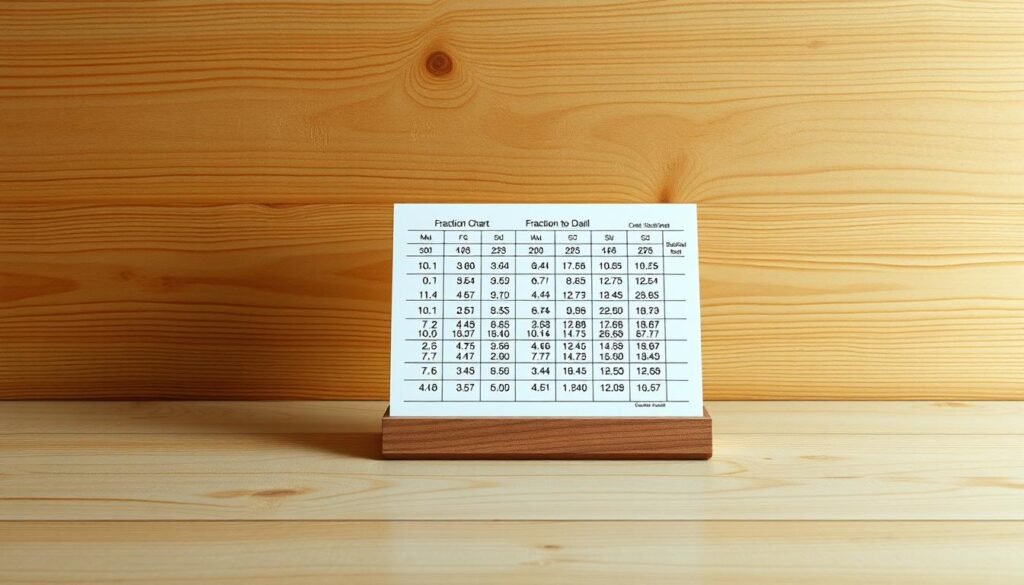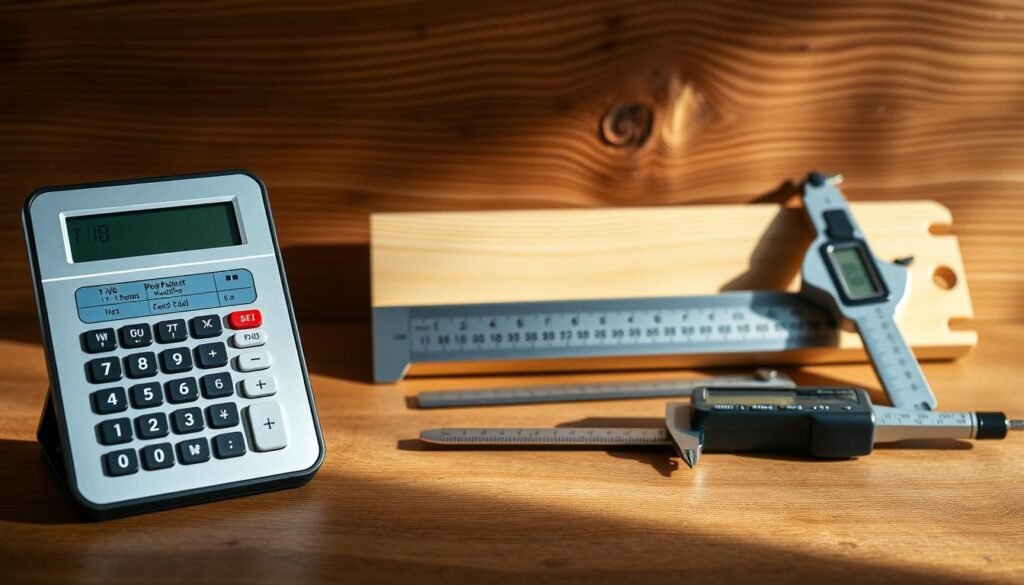Getting accurate stair stringer calculations is key for both pros and DIY fans. A well-made stair stringer is safe, lasts long, and meets building codes. But, figuring it out can be tough without the right tools and knowledge.
Learning to use a stair stringer calculator can save you hours of mistakes. It’s all about knowing the important inputs and how they affect your design. With the right tips, anyone can get good at using these calculators.
This guide will show you how to use a stair stringer calculator like a pro. It covers the best tips and practices to make it easier.
Understanding Stair Stringer Basics
Before we explore stair stringer calculators, let’s learn about the basics of stairs. A staircase has three main parts: treads, risers, and stringers. Knowing these parts and how they work together is key to building a safe and useful staircase.
The treads are the flat surfaces you step on. The risers are the vertical parts between the treads. The stringers, which are the sloping beams, support the treads and risers. The angle of the stringers, or stair angle, greatly influences the stairs’ size and layout.
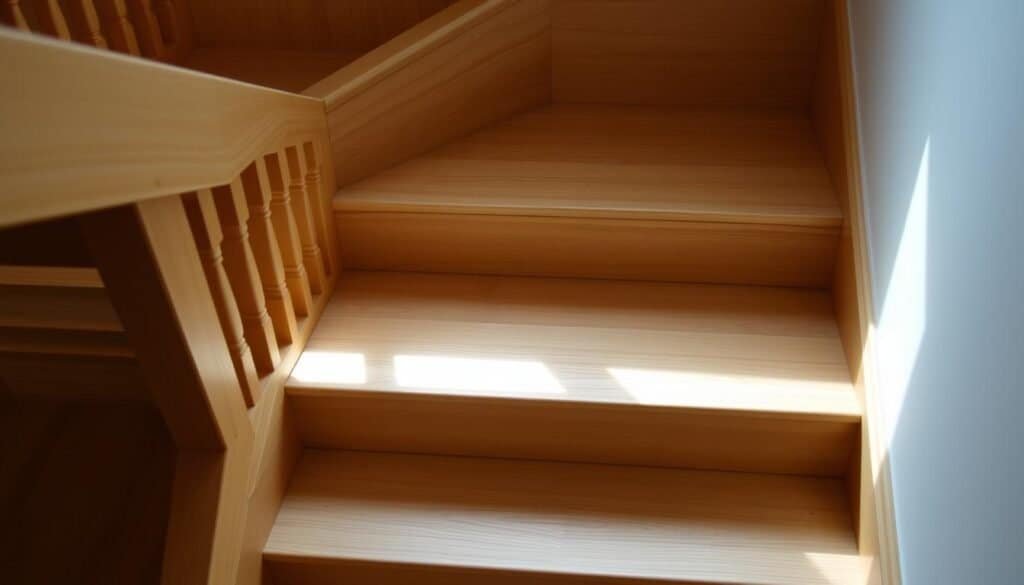
When planning your staircase, think about the dimensions and layout. This ensures your stairs meet local building codes. You need to figure out the total rise, total run, and the number of treads and risers. A good plan helps avoid costly changes during construction.
Understanding stair anatomy helps you use a stair stringer calculator better. This knowledge lets you enter the right measurements and understand the calculator’s results. It makes the stair building process more accurate and efficient.
Essential Measurements You Need Before Calculation
To start building stairs, you must know the key measurements. These measurements are vital for making stairs safe, useful, and meet building codes. You’ll need to collect a few important numbers.
The total rise and total run are key. The total rise is the vertical distance from the floor to the staircase top. The total run is the horizontal distance the staircase covers. These numbers help figure out the steps’ number and size.
Different stairs need different measurements. For example, straight stairs need different calculations than L-shaped or U-shaped stairs. Knowing your staircase type helps you find the right measurements.
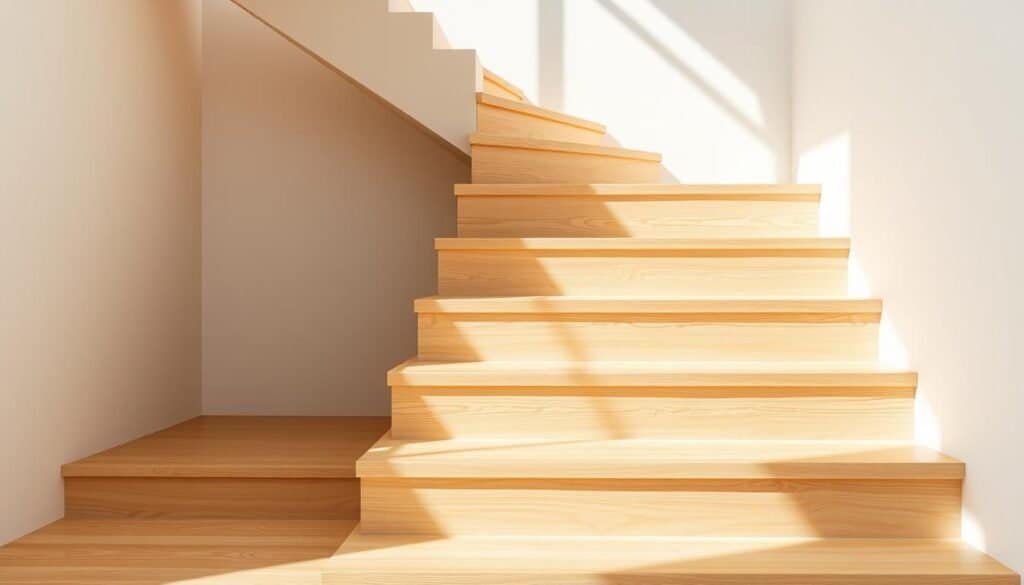
Building codes set rules for stairs sizes. You must follow these rules for safety and legal reasons. Also, remember to plan handrails’ placement and height, as codes regulate these too.
In short, before using a stair stringer calculator, you need precise measurements. Know your staircase type and the building codes. This ensures your stair project goes well.
How to Use a Stair Stringer Calculator Like a Pro
To use a stair stringer calculator well, you need both technical skills and practical experience. First, gather all the measurements you need, like the total rise and run of your stairs. This info is key for getting your calculations right.
Next, put your measurements into the calculator, following its instructions. You’ll need to enter the total rise, total run, and how many steps you want. Knowing how to do this right is a big part of stair calculator best practices.

After you’ve entered your data, the calculator will give you important details. It will show you the rise and run for each step and the stringer’s angle. It’s important to understand these to make sure your stairs are safe and meet local building codes. Getting to know these outputs is a key stair stringer tool technique.
Then, you might need to change your calculations based on your project’s needs. This could mean adjusting the number of steps or the type of stringer material. Being able to make these changes is part of being good at stair calculator best practices.
Lastly, always check your calculations twice and consider talking to a pro if you’re not sure. By following these steps and using a stair stringer calculator, you can make sure your stairs are accurate and done right.
Common Calculation Mistakes and How to Avoid Them
Using a stair stringer calculator is easy, but mistakes can happen. One big error is putting in wrong measurements. This can cause problems in your stair project.
To fix this, check your measurements twice before using the calculator. Make sure you’ve measured the total rise and run correctly. These are key for the calculator to work right.

Another mistake is not knowing the calculator’s limits. These tools are very useful, but they can’t do everything. Know what they can and can’t do and use other resources if needed.
Getting good at stair stringer calculations means knowing the calculator’s strengths and being careful with your data. By watching out for common mistakes and avoiding them, you can start your stair project on the right foot.
Always double-check the calculator’s results. A quick check can prevent expensive errors later. With time and effort, you’ll get better at using stair stringer calculators. This will make your stair projects more efficient and precise.
Advanced Stringer Calculator Features Worth Mastering
To improve your stair building skills, learning advanced features of a stair stringer calculator is key. These tools make building stairs easier, more precise, and efficient. By using these features, you can design stairs that fit perfectly.
Exploring features like adjusting for different stair types is important. This includes straight, L-shaped, or U-shaped stairs. You can also customize the stringer layout, including the number of stringers needed.
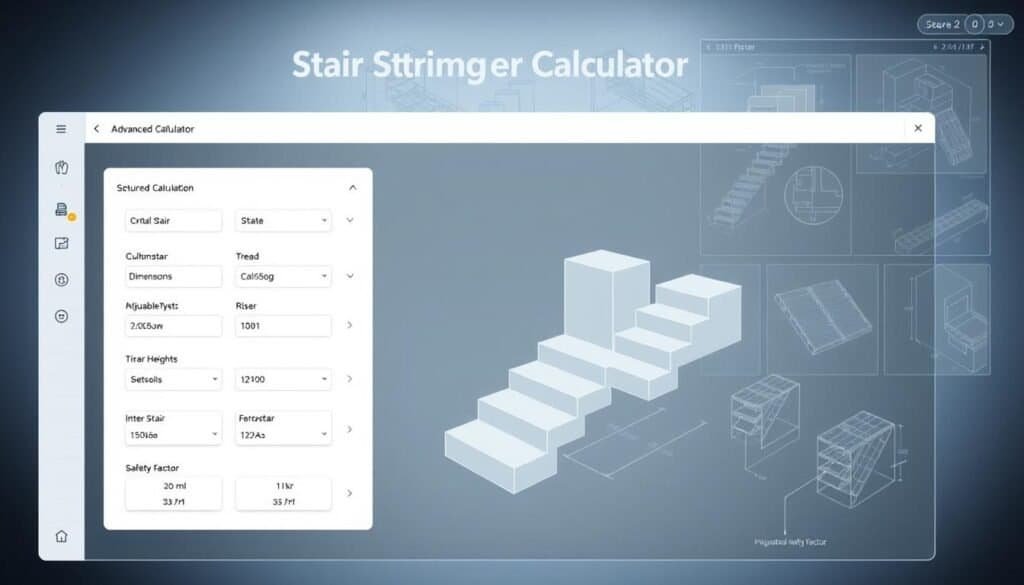
Another great feature is calculating the total rise and run. This includes headroom clearance and tread and riser thickness. It ensures your stairs are safe and meet building codes.
Some calculators let you export your work to a cutting list or report. This helps share plans with your team or clients. Using these features makes you a pro at building stairs, ready for any project.
In summary, mastering advanced stair stringer calculator features is a big step forward. It boosts your skills, workflow, and results. Whether you’re new or experienced, learning these features will greatly improve your work.
Translating Calculator Results to Perfect Cuts
After using a stair stringer calculator, it’s time to make perfect cuts. This step is key for a safe and beautiful staircase.
Start by marking the stringer layout on your lumber with the calculator’s numbers. Double-check your measurements to avoid mistakes. Focus on the rise and run, as they affect safety and comfort.
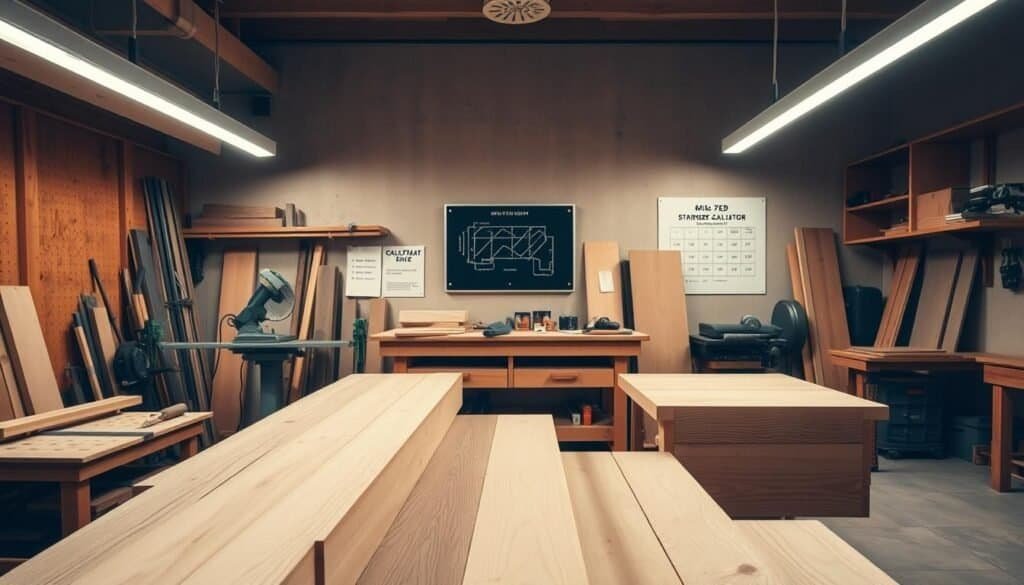
When cutting, use a sharp saw blade for clean cuts. For finishing stairs that look good and are strong, precision is important. Use a jig or template for complex designs.
For interior stair railing, the stringers are the base. Accurate cuts make the railing easier to install. The railing adds safety and style to your staircase.
For steep stairs, check your cuts against local building codes. Steep stairs are tough, but with the right cuts, you can make a safe staircase.
By following these tips and using your calculator results, you’ll build a staircase that’s safe and stunning.
Customizing Calculations for Various Stair Applications
To get the best results in stair building, you need to adjust your math for each stair type. Different designs, like straight, L-shaped, or U-shaped stairs, need special attention. This ensures they fit perfectly and meet local building rules.
Calculations for straight stairs are easy. But, L-shaped or U-shaped stairs are more complex. For L-shaped stairs, you must think about the landing area. You’ll need to adjust the stringer math to fit the design change.
U-shaped stairs pose a unique challenge. You must align the upper and lower flights right. And the landing must be in the correct spot. To get this right, you need to know how to tweak the calculator for U-shaped stairs.
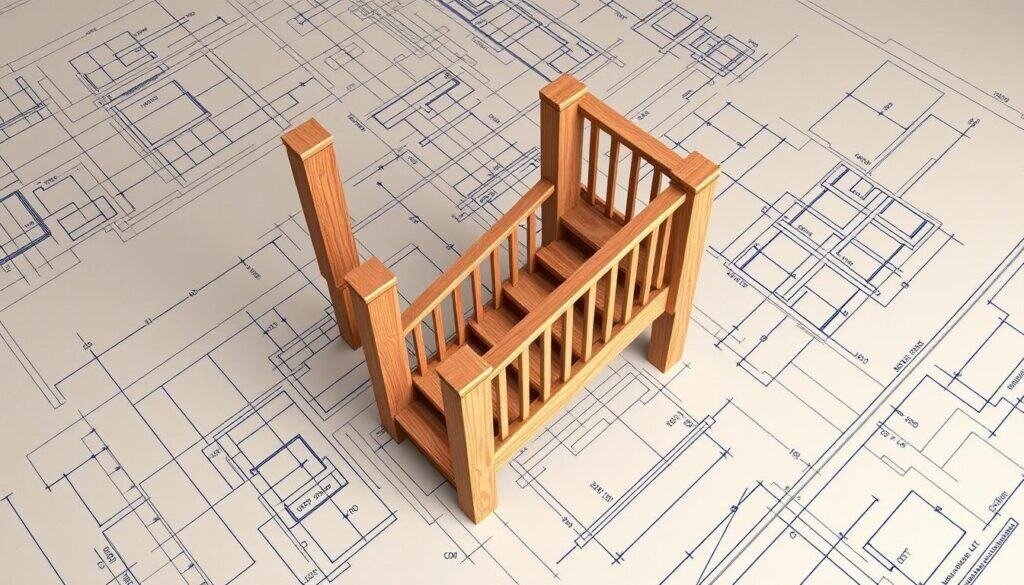
Knowing how to read stair plans is key. A detailed wooden stair plan shows the stair’s design, like rise, run, and stringer layout. By studying these plans, you can make sure your math matches the project’s needs.
When using a wooden staircase blueprint, focus on the stringers, treads, and risers specs. This info lets you adjust your math for a perfect fit and strong construction.
By tailoring your stair stringer math for different stair types, you can finish your project well. It will meet your design goals and follow local building rules.
Troubleshooting Your Stair Stringer Project
Even with careful planning, stair stringer projects can face challenges. But, we’re here to help. Most problems come from mistakes in measuring or calculating. To fix this, check your numbers with a good stair stringer calculator.
Spotting the problem is the first step. Make sure your measurements match the plans. Also, double-check that your cuts are right. If you’re using a pre-made stringer, make sure it fits your project.

For more help, look at guides like “how to cut stair stringers pdf” or “staircase construction details pdf”. These can offer tips on common mistakes and how to steer clear of them.
Being proactive and tackling issues early can lead to a successful project. Remember, patience and careful attention are essential for great results.
Conclusion
Getting the right measurements for stair stringers is key for a successful build. This is true whether you’re working on deck plans or framing projects. With a stair stringer calculator, you can make sure your stairs are both useful and look great.
Building stairs needs careful attention to detail. Now, you have the skills to handle complex stair projects with ease. Use the tips and methods we discussed to get top-notch results.
As you keep working on your stair projects, using a stair stringer calculator will become second nature. This skill will help you in many construction tasks, from simple stairs to complex deck designs.
With the knowledge from this guide, you’ll be able to plan and build your stairs efficiently. You’ll ensure they are of the highest quality and safe to use.


